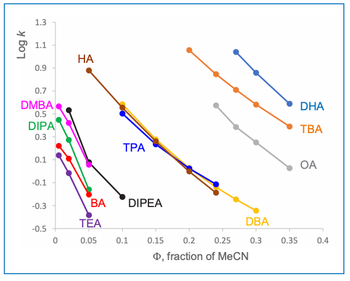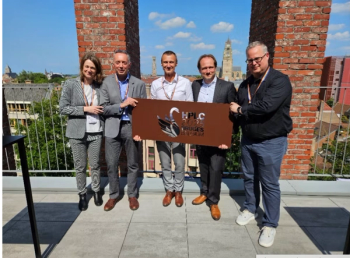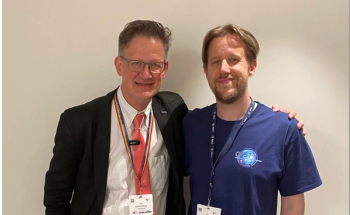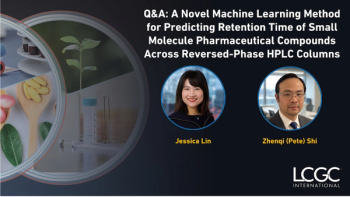
Predicting Concentration Profiles in Gradient LC Using Neural Networks
Physics-informed neural networks were tested for their capabilities in predicting concentration profiles in gradient liquid chromatography.
Rzeszow University of Technology researchers based in Rzeszow, Poland predicted concentration profiles in gradient liquid chromatography (GLC) using physics-informed neural networks (PINNs). Their work, which was published in the Journal of Chromatography A, showed how this approach can help investigate complex problems and streamline GLC use (1).
Differential equations, which are vital for describing physical phenomena, are widely used in many scientific fields, such as quantum physics (2). While numerical techniques are useful in investigating complex problems, as well as designing and optimizing technological processes, they can be computationally demanding (3). Further, producing highly accurate outcomes may require high-performance computing facilities.
Gradient liquid chromatography (GLC), otherwise known as gradient-elution liquid chromatography, is a commonly used technique where the concentration of one or more polar solvents in a nonpolar solvent is increased (4,5). This can offer improved analyte elution capabilities (1). However, experimental determination of optimal separation parameters with GLC can be tedious. This has led to various numerical methods being used to optimize these processes.
In this study, two Physics-Informed Neural Network (PINN) models were used to predict the dynamics of a multicomponent GLC process under various operating conditions, all without the need for knowing adsorption isotherm forms and parameters. PINNs, which are neural networks trained to solve supervised learning tasks while respecting any given laws of physics described by general nonlinear partial differential equations, can be applied to forward problems, where the mathematical model is solved, and inverse problems, in which unknown parameters of equations are estimated (6). The scientists hoped to reach consistency with using deep learning models capable of solving partial differential equations (PDEs). These types of models can reproduce the behavior of physical phenomena using knowledge extracted from governing equations.
Two PINN models were proposed, each based on datasets obtained from numerical solutions of the equilibrium dispersive (ED) chromatography column model. After training and testing, the models were capable of predicting concentration profiles under linear and nonlinear GLC conditions with more than satisfactory accuracy. The first model, model A1 tested under linear GLC conditions, with variable inlet concentration or injection time. The second model, model A2, was validated both under linear and nonlinear GLC modes and with variable axial dispersion and mass transport resistances.
According to the scientists, this is the first attempted to use the PINN approach on GLC to predict concentration profiles under various elution conditions. With the two proposed PINN models, information regarding the complex dynamics of species separation were embedded into loss functions and captured by the neural network throughout the training phase. Determining optimal conditions for chromatographic separation relies on carefully selected and performed experiments, followed by analytical or numerical solving of classical mathematical column models. Though the scientists hope to explore PINN capabilities further, the scientists showed that training PINN models can allow for significantly short computation time.
References
(1) Rękas, F.; Chutkowski, M.; Kaczmarski, K. Application of Physics-Informed Neural Networks to Predict Concentration Profiles in Gradient Liquid Chromatography. J. Chromatogr. A 2025, 1748, 465831. DOI:
(2) Abdou, M. A.; Owyed, S.; Abdel-Aty, A.; et al. Optical Soliton Solutions for a Space-Time Fractional Perturbed Nonlinear Schrödinger Equation Arising in Quantum Physics. Results Phys. 2020, 16, 102895. DOI:
(3) Gopinath, D.; Sushma, C. V. Design and Optimization of Four Wheeler Connecting Rod Using Finite Element Analysis. Mater. Today: Proc. 2015, 2 (4–5), 2291–2299. DOI:
(4) Gradient Elution Chromatography. ScienceDirect 2013.
(5) Niezen, L. E.; Staal, B. B. P.; Lang, C.; et al. Recycling Gradient-Elution Liquid Chromatography for the Analysis of Chemical-Composition Distributions of Polymers. J. Chromatogr. A 2022, 1679, 463386. DOI:
(6) Raissi, M.; Perdikaris, P.; Karniadakis, G. E. Physics-Informed Neural Networks: A Deep Learning Framework for Solving Forward and Inverse Problems Involving Nonlinear Partial Differential Equations. J. Comput. Phys. 2019, 378, 686–707. DOI:
Newsletter
Join the global community of analytical scientists who trust LCGC for insights on the latest techniques, trends, and expert solutions in chromatography.




